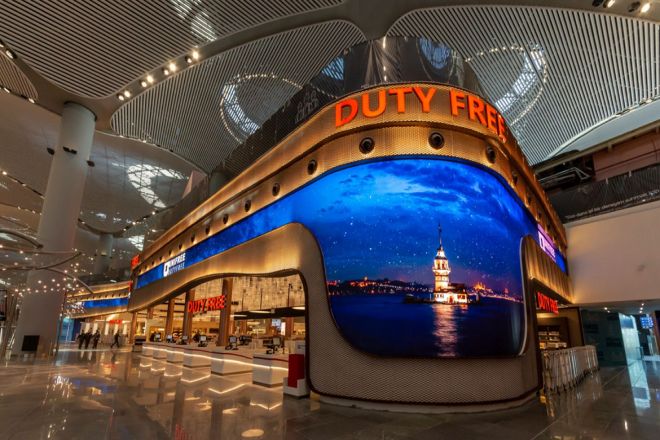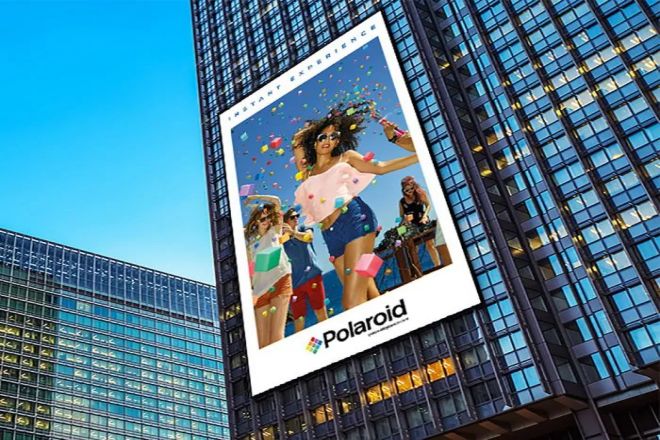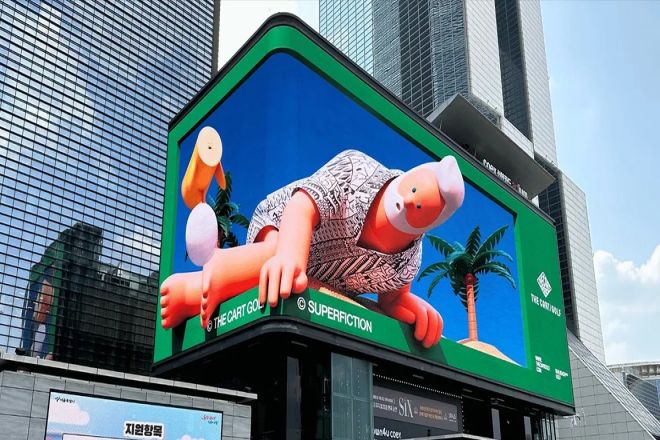介绍

视频来源 LED显示屏作为其核心驱动力,不仅承载着信息的传递,更是视觉盛宴的起点,其品质直接决定了显示器上画面的清晰度、色彩的鲜艳度、信息传递的准确度。
对于前沿的3D LED显示屏来说,3D视频源是不可缺少的灵魂,赋予了画面深度和层次,让观众不需要辅助设备就能享受到身临其境的立体视觉体验。
这种技术的融合,不仅要求视频源具有高度的真实感和丰富的细节,也考验显示器在图像处理、色彩还原、立体效果呈现方面的卓越能力,共同推动视觉艺术迈向新的高度。
1、LED显示屏视频源的色彩与亮度
关于LED显示屏视频源的色彩和亮度要求的要点您已经概括得很好了。
在这里,我将进一步提炼和补充一些相关信息,以便更充分地理解这些要求的重要性以及如何实现这些要求。
1). 颜色要求
1.1). 高饱和度和对比度
- 高饱和度:
饱和度高意味着色彩更加鲜艳,能够更加准确的展现视频内容的细节和色彩层次。
LED显示屏的像素能够发出颜色较为纯正的光,因此视频源中丰富的色彩信息能够直接转化为屏幕上令人印象深刻的视觉效果。
- 高对比度:
高对比度的视频源可以清晰区分图像中的亮部和暗部,使画面更加立体有层次感。对于LED显示屏而言,高对比度不仅能增强视觉冲击力,还能在远距离观看时保持图像的清晰度。
1.2). 黑色背景推荐(尤其适用于 透明LED显示屏)
- 透明的功能利用:
透明LED显示屏因其独特的透明背板设计,可以融入环境并产生独特的视觉效果。黑色背景不仅可以在视觉上增强这种融入感,还可以通过减少光线透射来降低能耗。
- 增强层次感:
黑色背景与明亮内容的强烈对比,在视觉上能形成鲜明的层次,吸引观众的注意力。这种设计特别适合需要突出特定信息,或者需要营造特定氛围的场合。
2). 亮度 调整
2.1). 适应环境光
- 自动调节亮度:
现代LED显示屏通常配备亮度传感器和智能控制系统,可以根据环境光的变化自动调节屏幕亮度。这种自动调节功能可确保观众在不同的光照条件下都能获得最佳的观看体验。
- 手动调整选项:
除了自动调节外,很多LED显示屏还提供手动调节亮度的选项,以便用户根据实际需要进行细微的调整。手动调节通常是通过显示屏的控制软件或遥控器来实现的,操作简便快捷。
2.2). 亮度调节的重要性
- 节能降耗:
在光线昏暗的环境中适当降低屏幕亮度,不仅可以减少能耗,还可以延长LED显示屏的使用寿命。
- 保护视力:
过高的亮度会对观众的视力产生不利影响,合理的亮度调节有利于保护观众的视力健康。
- 改善观看体验:
无论是在户外还是室内环境,通过亮度调节保持画面清晰可见是提高观众观看体验的关键因素之一。
2、LED显示屏视频源的分辨率和清晰度

1). 解决 LED显示屏视频源的清晰度
- 高清标准
随着数字显示技术的不断发展,高清显示已经成为基本要求。
对于通用LED显示屏,例如商业广告、体育赛事直播、公共信息发布等,视频源的分辨率至少应为1920*1080(也称为全高清或2K)。
此分辨率标准保证了视频内容以清晰的画质呈现在屏幕上,满足大多数观众的观看需求。
- 高分辨率要求
但在追求更高画质、更细腻视觉效果的场合,例如大型指挥调度中心、大数据展示系统,或是专业的影视播放环境,对视频源的分辨率要求更高。
在这些情况下,视频源的分辨率必须达到3840*2160(4K)或者更高(比如8K),高分辨率的视频源能够展现更多的细节,让画面更加细腻逼真,给观众带来身临其境的观看体验。
特别是在实现点对点显示时,即每一个LED像素对应视频源中的一个像素,可以最大限度减少画面的模糊和锯齿感,提高整体的显示质量。
2). 长宽比匹配
- 一致性
视频源的宽高比是指视频画面的宽度与高度的比例,为了保证LED显示屏播放的视频画面不变形、不失真,视频源的宽高比必须与LED显示屏的宽高比完全一致。
这种一致性是保证画质和观众体验的重要前提,如果视频源的宽高比与显示器不匹配,画面就会被拉伸或者压缩,影响观看效果。
- 灵活调整
但在实际应用中,LED显示屏的形状和比例可能会多种多样,例如弧形、L形、异形等。
为了满足这些异形显示屏的需求,视频源必须具备灵活调整的能力,这通常是通过视频处理软件或硬件设备来实现的,可以对视频源的长宽比进行微调或裁剪,以适应不同形状、比例的LED显示屏。
同时一些先进的视频处理系统还支持实时画面变形技术,可以将视频内容完美映射到异形屏幕上,并且不会损失过多的画质。
3、LED显示屏视频源的视频格式及编码
1). 视频格式兼容性
当我们要为LED显示屏播放视频时,首先要确保视频文件的格式是显示屏“能理解”的,就如同我们在手机上看电影,需要电影文件是手机支持的格式一样。
LED显示屏常见的视频格式有AVI、MP4等,它们就像视频界的“普通话”,大多数显示屏都可以轻松识别和播放。
2). 视频编码标准
视频编码就像给视频内容披上一件“压缩外衣”,使得视频文件更小,更易于传输和存储,同时尽量保持画质的完好。
H.264和H.265是两种非常流行的视频编码标准,可以使视频文件更精简,同时保持清晰的画质。
LED显示屏需要能够“解锁”这些代码并显示视频内容。
3). 解码能力
LED显示屏内部有一个“解码器”,它的作用就是将编码后的视频文件“翻译”回我们所能看到的画面。
这个解码器必须足够强大,能够快速准确的处理各种视频格式和编码标准,保证视频在播放过程中不会卡顿,画面流畅清晰。
简单来说,就像我们在看外语电影的时候,需要字幕组把电影翻译成中文,这样我们才能看懂。
LED显示屏的解码器就是“字幕组”,负责把视频文件翻译成显示屏可以显示的画面。
因此我们在选择LED显示屏播放的视频源时,一定要注意视频格式是否兼容,编码标准是否高效,显示屏的解码能力是否足够强。
这样才能保证视频内容在LED显示屏上呈现出最佳的效果。
4.3D LED显示屏对视频源的特殊要求

1).定制生产
- 3D情感规划
对于3D LED显示屏来说,视频源的定制制作至关重要,这不仅仅意味着简单的视频编辑,还需要详细的3D效果规划。
策划阶段需要考虑如何通过视频内容营造出强烈的立体感和视觉冲击力,让观众不用佩戴任何设备就能感受到裸眼3D的震撼效果。
这通常包括设计视频中的深度、分层和动态变化等元素,以确保最终的 3D 效果既逼真又令人着迷。
- 高分辨率和大尺寸
为了进一步提升3D效果的清晰度和沉浸感,建议尽可能采用高分辨率(如4K以上)、大尺寸的LED显示屏。
高分辨率保证了视频中的每一个细节都能清晰的显示出来,而大尺寸则可以让观众更加沉浸在3D世界中,仿佛置身于视频场景之中。
这种组合可以显著提升观众的观影体验,让3D效果更加真实、震撼。
2). 观看体验优化
观看距离和角度对3D LED显示屏的观看体验有着重要的影响,合理的观看距离保证观众可以清晰地看到视频内容中的每一个细节,同时避免因距离过近而产生的不适感。
此外,还需关注观众的观看角度,保证观众能从最佳位置欣赏到3D效果的魅力,通过科学设置观看距离和角度,可最大程度提高观众的观看舒适度和满意度。
- 屏幕形状与片源匹配
对于异形或者非标准比例的LED显示屏,在制作3D片源时需要充分考虑其独特的形状特点。
包括了解屏幕的形状、尺寸、分辨率等参数,以便在视频制作过程中进行有针对性的调整和优化。
通过精心设计、制作与屏幕完美匹配的3D片源,可以保证视频内容在异形屏幕上完美呈现,从而进一步提升观众的观影体验。
这种搭配不仅关系到画面的完整性和美观度,也直接影响到3D效果的呈现和观众的沉浸感。
结论
LED显示屏对于视频源的要求是多方面的,包括色彩与亮度、分辨率与清晰度、视频格式与编码,以及对3D视频源的特殊要求等,只有满足这些要求的视频源才能在LED屏幕上呈现出最佳的显示效果,给观众带来震撼的视觉体验。
因此相关行业从业者应充分认识和掌握这些要求,打造优质的视频内容,推动LED显示技术的不断发展和应用。
最后,如果你想了解更多关于LED显示屏的信息, 请与我们联系。
